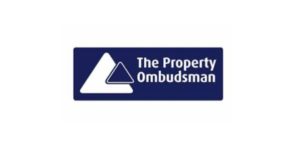When you own a property, one phrase you may hear often in your documentation is “beyond reasonable wear and tear”. This will be used in conjunction with the state of items or any part of the property to decide at what point it is considered damage and at what point it is the natural decline in quality of these items. This can sometimes be hard to pinpoint and define, which is why we’ve made this article to help you define “wear and tear” and how much is fair.
What is wear and tear?
Wear and tear is the damage that happens to an object in ordinary use during a period. Anything beyond this would be considered as additional damage and, as a landlord, you should be able to get your tenants to pay for any damage that may incur.
One example could be something technical like a fire alarm. If it is run by a battery and the battery runs out of charge, causing the alarm to stop working, then this is simply due to “wear and tear”. A more physical example could be the state of a carpet. Its quality will naturally decrease over time from people walking on it and there isn’t much the tenants can do about it. However, if a drink was spilt on the carpet that permanently stained the carpet then that is the tenant’s responsibility and has gone beyond reasonable wear and tear.
How much is fair?
This is subjective, and certainly varies from object to object. It also depends on what the state of the subject was before the tenant moved in, and the tenants will know this. What appears to be damage on the face of it could be due to a lack of long-term attentive care. This means it’s not necessarily the fault of the person whose supervision it was under when the items appeared to break. If there is something the tenants could’ve done to prevent the damage, in excess of the day to day damage that would happen, then it will be their responsibility to pay for thay damage.
Examples of fair wear and tear
- Worn/scuffed floor/carpet
- Faded/cracked/peeling wall/wallpaper
- Dirty windows
- Loose hinges
- Worn locks/keys
- Faded/worn appliances
Examples of damage beyond wear and tear
- Stained/torn floor/carpet
- Hole in wall/wallpaper from obvious puncture
- Broken windows
- Damaged door from forced entry
- Gouged wall/floor/door
- Broken appliances
Other things to consider
The most obvious thing to consider as a landlord is your inventory. To decide what damage has or hasn’t been caused starts with the items. Each and every item that is your property or part of it must be listed in the tenancy agreement, in addition to the condition that they are in at the beginning of the tenancy. This will make it much easier to clarify who is responsible for the damage if any has been caused beyond reasonable wear and tear.
Wear and tear usually happens over a prolonged period of time, so consider the length of the tenancy when thinking about any damage costs. If your tenants have been living in your property for a long time, then damage is commonplace through wear and tear. However, if they haven’t been there for long and you come across any damage it is less likely to be down to wear and tear, although this does depend on the state they were in at the beginning of the tenancy.
Inspect the property regularly. If damage has been caused, your tenants should let you know, but this isn’t always the case. If an item has been broken for a long time but you don’t hear about it until a few months later, you may consider it wear and tear, when in truth it may have been avoidable damage.
Finally, if there is a dispute, make sure you gather evidence to fight your side of the argument. Whether this is information found in the tenancy agreement or pictures of the damage, you may need to be prepared. Taking regular photos is also something worth considering over time so that you can get a good idea of how fast and in what ways the wear and tear in your property is taking place.



















